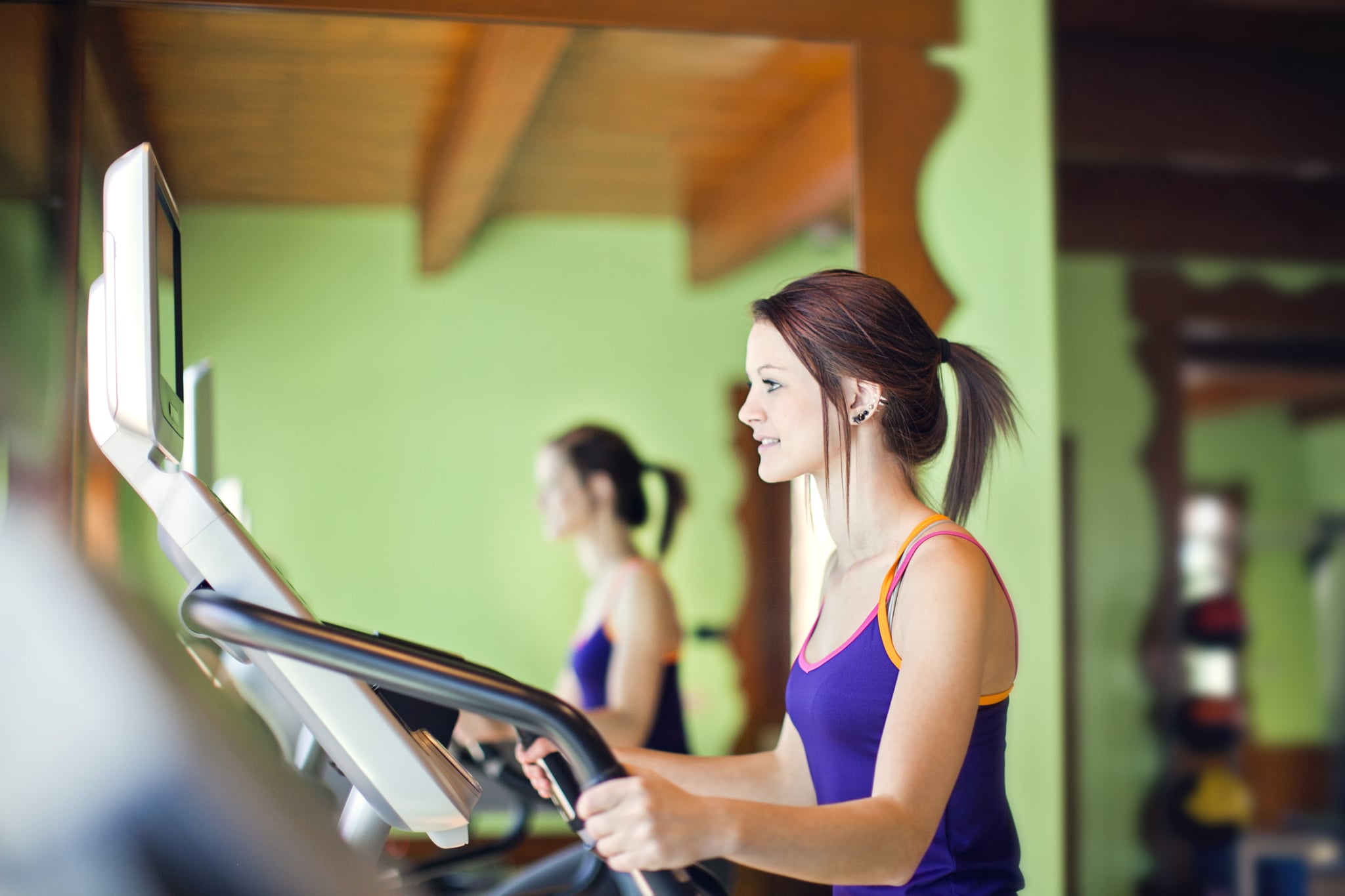
My StairMaster warmup always goes as follows: I stand before the mechanical mountain, sizing it up — then, with one deep inhale, I begrudgingly pull myself onto the steps and brace for the burn.
This, combined with my go-to hunched-over posture, hardly makes me the poster child for StairMaster success.
Candy Morales, an ACE, AFAA certified personal trainer with A-list clientele, would say I’m doing myself a disservice. The StairMaster can benefit your heart, glutes, hamstrings, quads, calves, and core — but executing proper form and technique is crucial to reaping all the benefits of your hard (thigh-burning) work.
Spending just 20 minutes a day, three times per week, on the StairMaster can significantly improve your cardiovascular endurance and strength, Morales says. In that short amount of time, though, there is little room for error.
Here, Morales calls out the most common StairMaster mistakes made, how to adjust them, and why it’s so important to get it right.
Don’t Skip Your Warmup
Your body needs time to adapt to the demands you’re about to place on it. Morales suggests taking five to 10 minutes to warm up at the beginning of your workout.
Climbing the stairs very slowly (at a speed where you can hold a conversation without gasping for air) raises your body temperature and increases blood flow to your muscles. In return, you’re improving your performance and reducing your risk of injury.
Make Sure to Maintain Good Posture
According to Morales, it’s key to keep your chest up, shoulders down and back, and hips forward while inhaling through your nose and exhaling through your mouth.
Poor posture — like leaning forward or resting your body weight on the side rails — keeps the “work” off the intended muscles that are meant to be used and reduces the benefit you get out of the workout. This also decreases oxygen consumption, tightens the hip flexors, allows the core muscles to relax, and puts a lot of stress on the upper body, Morales says.
If you have trouble keeping up while maintaining proper posture, Morales recommends slowing down or reducing the intensity level to something you can manage.
Step Like You’re Climbing Real Stairs
Morales wants you to remember that this machine is meant to simulate actual stairs. Do not walk up the steps on the balls of your feet. Plant your entire foot on each step so the effort comes from the heels.
“All the action, which produces results, comes from the heels,” Morales admits. She compared this to squats. When your heels are planted, you can get the right contractions in the glutes and hamstrings and capitalize on the most cardiovascular benefit. Then, when you exit the step, roll up the ball of the foot to properly work the calf.
Experiment With Different Exercises
Switch up your routine to keep things exciting and challenging. Morales proposes adding a leg extension with each step to maximize the glutes, lower back, and hamstrings. Walk up sideways by crisscrossing your legs as you take single step-ups. This movement works your inner and outer thighs more.
Find Your Rhythm With a Great Playlist
Morales loves to switch up fast-paced movement with slow-paced movement. She relies on climbing to the beat of a song to make the time go by faster. Plus, it puts her into an interval workout, which burns more calories.
Save Time For a Proper Cooldown
A proper cooldown is crucial to reducing StairMaster soreness and heart recovery, Morales admits. She instructs you to repeat your warmup as a cooldown, then stretch it out to restore muscle flexibility.
Morales recommends the following post-StairMaster stretches:
Click here for more health and wellness stories, tips, and news.
Image Source: Getty / AE Pictures Inc.
